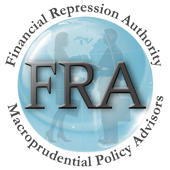|
GET THE MOST ABSTRACTION & SYNTHESIS Through the processes of ABSTRACTION and SYNTHESIS Gordon delivers indepth research which pulls from his Tipping Points logical, macro-economic trends and themes which are or will be effecting his readers. Here are keys to the steps Gordon takes, from beginning to end -- identifying tipping points, then abstracting and synthesesizing themes into commentary. Fully understanding Gordon's complete process will help the reader truly appreciate what he delivers. KEY: What are Tipping Points?
|
TECHNICAL RESEARCH
- Macro & Technical Analysis The very popular Tipping Points is now located at MATASII.com for Susbcribers. Limited public posts are also avalailable to non-subscribers. WHAT ARE TIPPING POINTS? They are worldwide events and trends that are of global economic importance - specifically to investors. Six days a week, Gordon's proprietary search engine scours worldwide news and commentary bringing you the most important news intelligence you should be reading to be a knowledgable and well-informed investor.
|
MACRO MONETARY RESEARCH It is here where you find: - Macroprudential Monetary Research The Financial Repression Authority (FRA) educates and identifies the globalized solutions for investors, funds and retirees for the creation, preservation and storage of wealth in an era of adverse risks resulting from macroprudential (good-intentioned) central bank policies, government fiscal policies and financial regulations focused on controlling excessive government debt, attempting to stimulate economic growth, and minimizing the potential for financial and economic crises. What is Financial Repression? Wealth Management Solutions Wealth Management Firms
|
VIDEO DISCUSSIONS
It is here where you find Gord's latest Video discussions and interviews with regular co-hosts such as Charles Hugh Smith, John Rubino and Mish Shedlock. Macro - Latest Abstract / Narrative plus Video
AUDIO w/ Slide Presentations AUDIO w/ Slide Presentations AUDIO, VIDEO, TRIGGER$ WEBZINE & Slide Presentations
|
2016 Only >> See Below Browse All Research & Commentaries ANNUAL THESIS WHITE PAPERS - FREE DOWNLOADS - THESIS 2017: Coming in January
|
||||||
"Most prescient source of information on global market issues, bar none." Duane V "Nowhere else have I heard explanations of economic current events as you are able to put forth, with convincing documentation." P Thomas C |
You have more data analysis than anyone else writing. Dr Clayton B, Sarasota FL
Oioiman |
I am really enjoying your publication, I am a big fan of Gordon and this webzine consolidates his research perfectly. Curtis B "You have the best information of its type out there. Not even a close second really." |
"Your audios are invaluable. It is one of the few resources that provide this type of information. Small retail investors like me get taken advantage of by big firms / banks. Your information is unlike any other out there." Jean L |
"Content is brilliant, right to the heart of our world problems, and spoken so fearlerssly." Richard H. "I have listened and subscribed to countless sources but have consolidated my trading resources to you Curtis B |
||||||
SIGN-UP TO AUTOMATICALLY RECEIVE GORDON'S RESEARCH FROM ANY OF HIS PUBLISHING SITES - SELECT ONLY WHAT YOU WANT & NEED Sign Up Now
Quality sites
|
||||||||||
FAIR USE NOTICE This site contains copyrighted material the use of which has not always been specifically authorized by the copyright owner. We are making such material available in our efforts to advance understanding of environmental, political, human rights, economic, democracy, scientific, and social justice issues, etc. We believe this constitutes a 'fair use' of any such copyrighted material as provided for in section 107 of the US Copyright Law. In accordance with Title 17 U.S.C. Section 107, the material on this site is distributed without profit to those who have expressed a prior interest in receiving the included information for research and educational purposes.
If you wish to use copyrighted material from this site for purposes of your own that go beyond 'fair use', you must obtain permission from the copyright owner. COPYRIGHT © Copyright 2010-2011 Gordon T Long. The information herein was obtained from sources which Mr. Long believes reliable, but he does not guarantee its accuracy. None of the information, advertisements, website links, or any opinions expressed constitutes a solicitation of the purchase or sale of any securities or commodities. Please note that Mr. Long may already have invested or may from time to time invest in securities that are recommended or otherwise covered on this website. Mr. Long does not intend to disclose the extent of any current holdings or future transactions with respect to any particular security. You should consider this possibility before investing in any security based upon statements and information contained in any report, post, comment or recommendation you receive from him.
|
||||||||||











